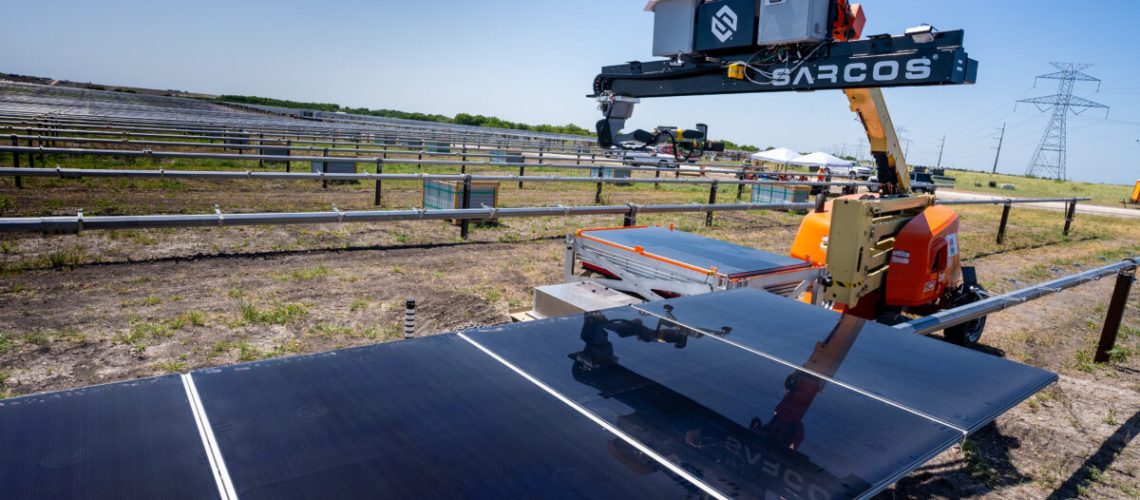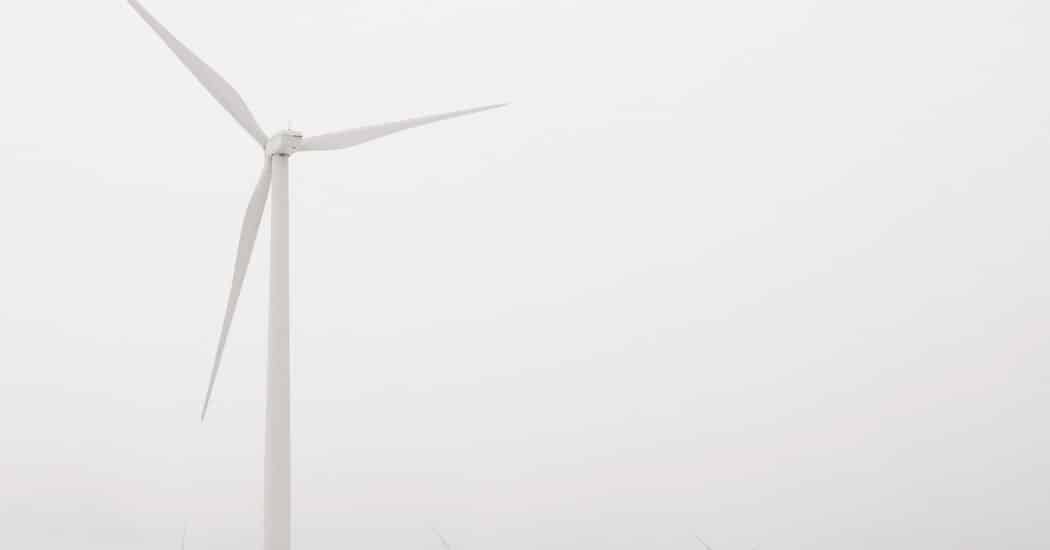Installation robots are moving from test centers to the field. Sarcos Technology and Robotics Corporation and Terabase Energy recently announced key business developments.
As the United States pursues a wholesale shift from a fossil fuel-based energy system to one defined by renewables, it is an all-hands-on-deck scenario to stay on track to meet climate goals. Some of these hands may turn out to be robotic.
The Solar Energy Industries Association (SEIA) projects a demand of 800,000 new solar workers by 2030 to build the projects the United States needs to be on pace with its decarbonization plan. However, 44% of solar industry employers report it is “very difficult” to find qualified applicants, said the Interstate Renewable Energy Council (IREC).
With this challenge in mind, solar developers are increasingly exploring and implementing autonomous, robotic versions of solar installers, particularly at the utility-scale. Two companies making recent moves are Terabase Energy and Sarcos Robotics Corporation.
Terabase secures funds
Terabase Energy, developer of the Terafab automated installation system, announced it secured $25 million in funding. The capital raise was led by Prelude Ventures, SJF Ventures, and EDP Ventures to support a commercial scale-up of its technology.
The company describes Terafab as an automated “field factory” that can double installation productivity. The installation system makes use of digital twins, logistics software, an on-site digital command center, a field-deployed automated assembly line, and installation rovers that can operate 24/7.
Terabase this year also opened a Woodland, California manufacturing facility; “a factory to make factories.” The facility is currently manufacturing the first gigawatt Terafab assembly line with capacity to make more than 10 GW of Terafabs per year.
Terabase said its system will double labor productivity when compared to traditional utility-scale installation methods. The system offers high-throughput, 24/7 operation, and modularity to enable rapid ramp ups and higher solar field construction speeds, significantly reducing project schedules.
“We successfully field-tested Terafab last year, building 10 MW of a 400 MW site in Texas. Today’s launch is the next step forward to rapid commercial scale-up,” said Matt Campbell, chief executive officer and co-founder of Terabase.
Terafab is pegged for commercial deployment starting in Q3 2023. The company said that the automated installation system reduces the levelized cost of electricity for utility-scale solar projects. It is also scalable, built on a modular design that can be replicated and deployed quickly.
Blattner and Sarcos
Sarcos Technology and Robotics Company found a partner in Blattner Company to provide its automatic, robotic construction solutions to the renewable energy developer. The collaborative agreement focuses on the development and refinement of Sarcos’ autonomous mobile robotic system designed to optimize employee safety and enhance the efficiency of the installation of PV modules for utility-scale solar projects.
“We are extremely optimistic about the use of robots for solar construction to help address the workforce shortages, productivity, and safety challenges that are currently slowing down the progress of U.S. solar initiatives,” said Matt Hadsell, senior manager-innovation and development, Blattner.
Sarcos’ proof-of-concept robotic system consists of an autonomous working vehicle, featuring the company’s Guardian XM robotic arm and an autonomous delivery vehicle. The solution uses cameras to identify where the PV panels need to be installed. The robotic arm then autonomously lifts up the panel using a vacuum system and places it approximately where it needs to be clamped to the mounting structure.
“The arm then goes into a special mode where the person clamping the panel can easily move that panel however they need, in order to align it and attach it into the panels,” Sarcos explains in a video on its website.
The partnership will build upon the Sarcos Outdoor Autonomous Manipulation of Photovoltaic Panels (O-AMPP) project, which is funded through the support of the U.S. Department of Energy’s Solar Energy Technologies Office (SETO). The O-AMPP project started in 2021 and Sarcos expects to commercialize its solution by late 2024.




